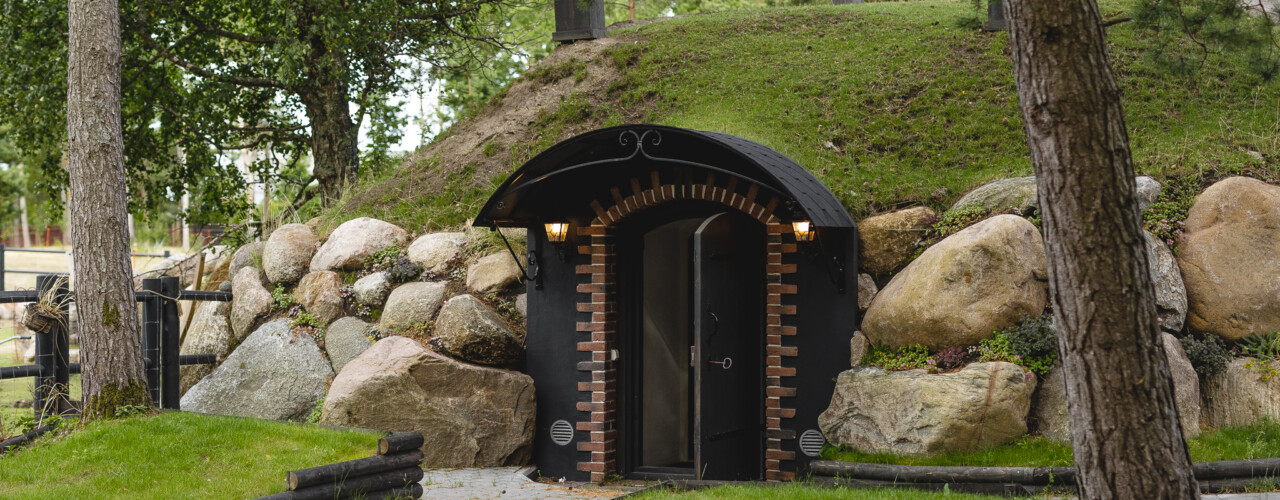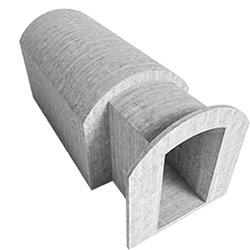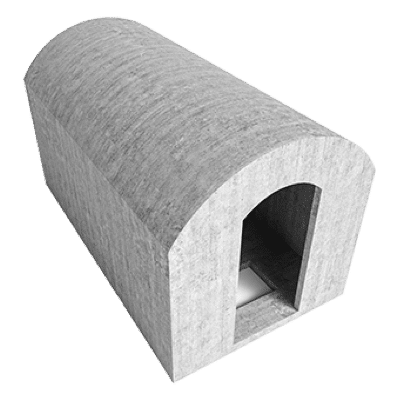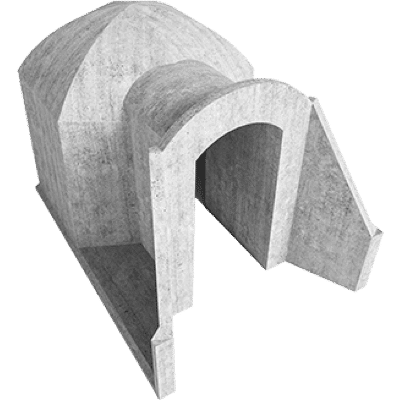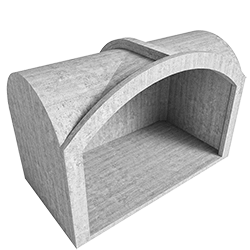It is often asked, what exactly is the temperature in the Revonia cellar in summer and winter?
And strangely enough, after 10 years of operation, we don’t have a single clear answer. To a large extent, the temperature depends on the location, the soil, the depth of installation, whether the location is exposed to the sun or in the shade, and the weather outside. There are many factors and it is impossible to predict the storage conditions accurately.
On average, customer feedback has been that the temperature in Revonia’s root cellar is 7-15 degrees in summer. In winter, however, it averages 2-7 degrees, and no icing has been noticed with normal use.
Of course, everything also depends on the characteristics of the deposit. Roots, for example, want moist, cool, and stable temperatures to last for a long time. For this purpose, we have created moisture grates on the floor of the vegetable cellar. The grates allow moisture from the ground to enter the cellar, and in cooperation with the lime plaster on the walls, the cellar maintains a stable humidity level. In case of excessive moisture, the lime plaster stores it in itself, and in dry times it releases the excess space back. For the same reason, you can notice that carrots and potatoes quickly become soft and rubbery in the refrigerator – this is caused by low humidity levels.
Every cellar owner should have a thermometer and also a hygrometer to monitor the characteristics and behavior of his cellar For example, a relative humidity of 75-95% in the underground cellar is recommended for the storage of root crops and deposits. Roots and preserves are best preserved at 0-10 degrees. The recommended temperature for storing meat and cheese is 11-14 degrees and relative humidity is 70-80%. The ideal temperature in the wine cellar is 8-19 degrees and the relative humidity level is 55-75%. Revonia’s product range also includes larger cellars where both roots and wines are stored together. To solve this, there are partitions and doors between the rooms, one room has moisture grates and the other does not.
Over time, how often the roots are brought from the cellar to the kitchen also develops. Some families bring what they need for the week, some go less often, some more often. After some use, the character of the cellar can only be seen, and only then can the storage conditions be used to the maximum. If the cellar does not behave as it should, its conditions can also be changed.
Tips for controlling the temperature in the cellar:
- If the cellar has become warmer than the nightly temperature over time, then it is worth leaving the cellar door open at night and closing it in the morning. After repeating this for a few nights, the cellar is pleasantly cool again. At this point, it is also worth making sure that rodents did not get into the cellar! If the rodent didn’t accidentally follow the owner through the cellar door, there was no other way for him to get there. Rodent nets are also installed in the ventilation system, and since the module consists of one whole piece, it cannot get into the storage compartment from anywhere else.
- It is important to ensure good air circulation and ventilation in the cellar. However, if the temperature in the cellar fluctuates a lot and warm air gets into the cellar easily, then the air outlet on the ceiling and the air inlet on the walls should be closed or at least tightened a little more. This ensures that a lot of warm air coming into the cellar does not mix with the cool air coming out of the cellar.
- Our cellars have two doors for a reason. The purpose of the outer door is to protect the vestibule from the scorching sun, snow, and rain. The inner insulated door protects everything inside. In addition, two doors are necessary so that warm air does not enter the cellar after the owner on a hot summer day. It is best to stand a bit between the two doors after entering from the outer door and only then open the inner door. If you enter the cellar in very hot or cold weather, make sure that one of the doors is always closed. The cellar does not have a mechanical temperature controller, so any major change from the outside can take about a week for the indoor climate to stabilize again.
- If there is a desire to store temperature-sensitive things such as wine, milk, and meat products in the cellar year-round, it would be wise to provide a frost protection heater in the cellar, which maintains a constant temperature in the cellar regardless of the constantly changing external conditions. Also, the electricity consumption of the heater should not be high thanks to the good insulation of the cellar.
There are also some constructional recommendations that ensure an even more stable temperature in the cellar:
- Plan the entrance door in the direction where it gets the least amount of sun during the day. It is recommended to plan a place in the garden for the installation, which would be in the shadow of the houses or the surrounding nature.
- Consider installing a canopy over the entrance. In addition to keeping precipitation and snow in front of the cellar door, it is also a great help in blocking the sun on the door.
- The cellar is made of reinforced concrete, covered with PUR foam, and preferably with 1m of soil. This should ensure very good heat retention for the cellar. But for the purpose of even better heat retention, it is possible to install the cellar deeper into the ground. For example, to a depth of 2-4 m. Then there is more surrounding soil, and the thermal energy of the earth keeps the temperature in the cellar even more stable. In this way, the hump caused by the cellar is also less noticeable in the yard.
- Plant plants and shrubs on the cellar roof. Through the shade of leaves and vegetation, the sun cannot directly heat the covering soil of the cellar.
A cellar is like a living organism. It breathes, changes temperature, and has a personality. No two cellars are alike. And if it seems that the cellar needs a lot of care and love, then it does, but not particularly more than tidying up a normal refrigerator from time to time. Considering the large capacity of the cellar with almost zero energy costs, controlling the temperature and humidity is something that many cellar owners do not even talk about as an obligation, but rather an interesting process – similar to trying a new recipe for storage or a variety of garden produce.
If you have any questions or suggestions to discuss with us, feel free to contact our sales team!
